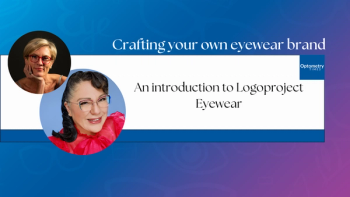
VEW 2024: Tech to get your dry eye clinic off the ground
Sabrina Gaan, OD, shares some of her most-used devices in her dry eye clinic and what helped her most in growing her specialized care.
At Vision Expo West, Sabrina Gaan, OD, shared a bit about her dry eye clinic and the technology that was instrumental in getting it off the ground. Gaan also shares some insights into owning a specialized dry eye clinic and suggestions for growth.
Video transcript
Sabrina Gaan, OD:
My name is Sabrina Gaan. I am the owner of Eyes on Plainville in Plainville, Massachusetts. So my office has been almost open for about three years now. I took over from a retiring doctor, and you know, the first thing I wanted to do was start a dry eye clinic. Obviously [I planned to] have primary care and still continue my ortho-K, my myopia management, but dry eye was something that I really wanted to dive into. So we started that right after I took over the office.
So the very first device I wanted was the OptiLight. I wanted the IPL [intense pulsed light] device, because it was the first, the only FDA approved, you know, dry eye treatment that actually treats rosacea and inflammation. And, you know, I had already had experience with some devices that only heat up the glands. So I wanted something different. And I had patients go out to Boston for treatment, and I wanted it because they all came back raving. So it was the only thing that really, really stood out to me that I had to have.
So we have the [Systane] iLux, we have a BlephEx. We have the the Lumenis OptiLight, the OptiPlus. And now we have a new Plasma Pen for, you know, eyelids and stuff. But, yeah, we have some fun stuff, but it's, you know, we have a slit lamp camera to do meibography, but we didn't have all that starting. So literally, we started off with, I started off with the iLux and the BlephEx, and then I got my Lumenis machine, but it was such an easy transition, honestly. It was easy for me to to get going with dry eye treatments. Just doing the OptiLight made such a difference with my patients. So easy build.
Honestly, like everyone's so concerned about, like paying for the machine, but it pays for itself. So it was one of those things where I would say, the one item I can't live without in my dry eye clinic is my Lumenis OptiLight. So I could have nothing else, and I would do amazing with just that one machine. But, you know, eventually I started building up and getting more equipment. But if you're starting out, just start with that. That is the one thing that I would say you should start with.
Don't be scared to talk to patients about dry eye when they're not complaining, because you'd be surprised once you start actually opening into that can of worms. They all [say], "Oh, I do get some blur at night." You know, they didn't realize it's their dry eye. They are on computer screens all day. They don't realize they have inflammation. Doctors are so scared to treat them, and it's because they're not complaining. But you actually have to explain to them what they have and give them the option of what works and fixes it. And you'd be amazed at how many patients are so, you know, so happy that you actually even offered it to them.
Everyone needs to treat their patients or send them to someone who does these treatments, because whether it's myopia management or dry eye, everyone should have a person that they can send off to if they don't want to do it themselves. Because you're doing them a disservice by not actually treating these patients or giving them the option, and they will eventually leave you anyway if you don't offer it to them.
Newsletter
Want more insights like this? Subscribe to Optometry Times and get clinical pearls and practice tips delivered straight to your inbox.














































.png)


